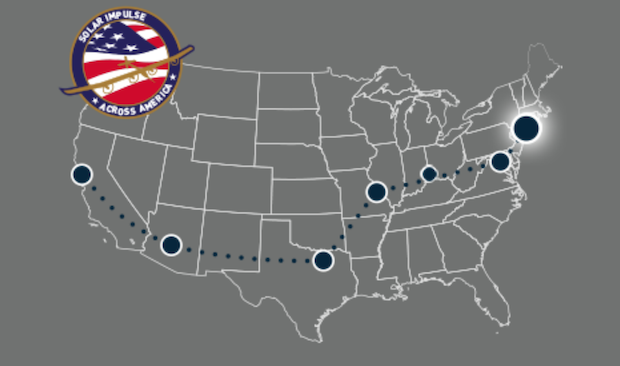Solar Impulse aims to push innovation on the ground
Hangar 19 at New York's John F. Kennedy International Airport is host to one unique airplane: the Solar Impulse.
The sun-powered plane made history by becoming the first aircraft to fly across America day and night without fuel. The Solar Impulse finished its two-month journey from NASA's Moffett Field in Mountain View, Calif. to JFK airport on July 6, where it is currently parked.
Solar Impulse's model HB-SIB is the second-generation aircraft that took the cross-country trip. The aircraft is powered by 11,628 solar cells, has an average flying speed of about 43 miles (70 kilometers) per hour and its maximum altitude is about 27,900 feet. Although its wingspan rivals a 747, the actual body of the plane is a lot smaller, with a cockpit that can only fit one person.
The groundbreaking trip may seem too slow to be practical, but chairman and pilot Bertrand Piccard thinks there is a bigger picture behind the project.
"We believe if we can demonstrate this in the air, where it is the most difficult to do, people will understand that they can also use the same technologies for their daily lives," Piccard told CBSNews.com.
Piccard shared piloting the plane with the company's co-founder and CEO Andre Borschberg. The two flew in 24-hour shifts across America, and made stopovers in Phoenix, Dallas-Fort Worth, St. Louis, Cincinnati and Dulles.
Borschberg and Piccard would like to think of themselves as environmental pioneers, saying their goal was not necessarily to change aviation, but to inspire innovation on the ground.
Some of the key advancements used on the Solar Impulse include carbon fiber sheets that weigh 0.8 ounces per 11 square feet, solar cells that are about the thickness of a human hair and batteries with a high energy density.
While the technologies are impressive, the creators emphasize that they didn't re-invent the wheel. They believe that pieces of the puzzle already exist, but needs to be put together in a different way. In their mission statement, the two pilots encourage people to rethink the status quo.
"If you take a car and just replace the turbo engines by electric motors and batteries for the fuel, it will not work very well," Borschberg told CBSNews.com. "Just to have solar cells on something, which exists, will not provide enough benefits and that's why something is sometimes criticized -- because the approach is wrong."
The Solar Impulse aims to make a trip around the world in 2015. By that time, the teams hopes to have designed a third-generation aircraft that will support multiple days of flying and a little more room for the pilot, including a rest room on board.

